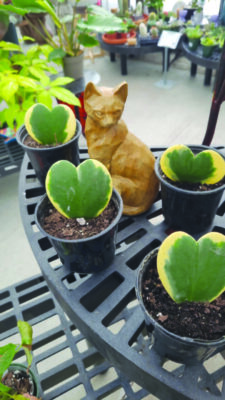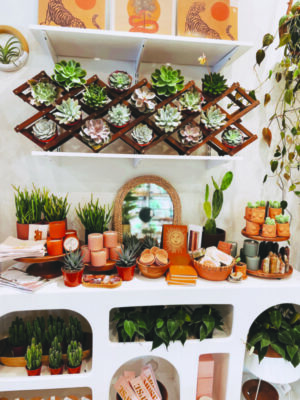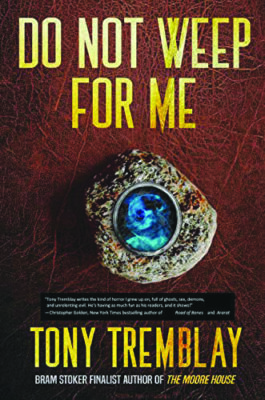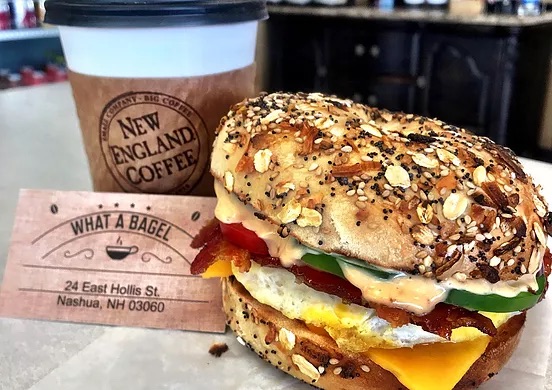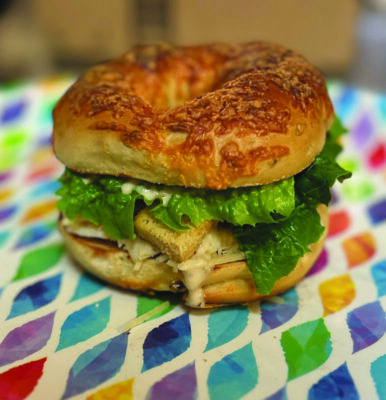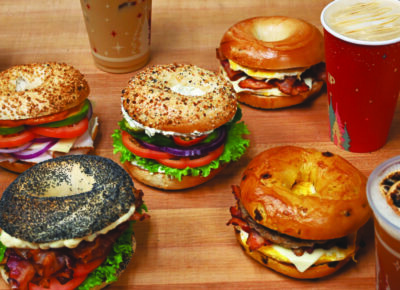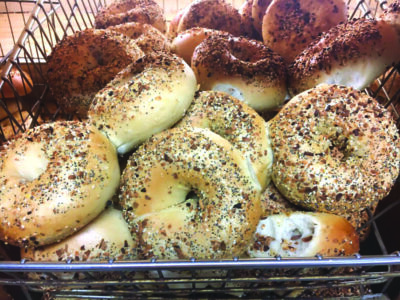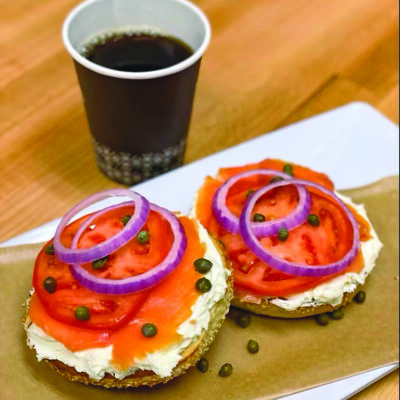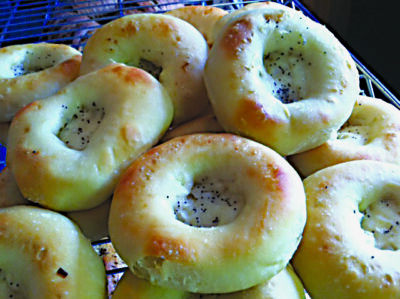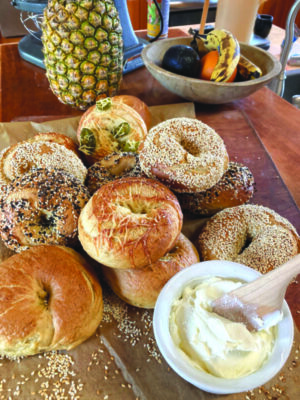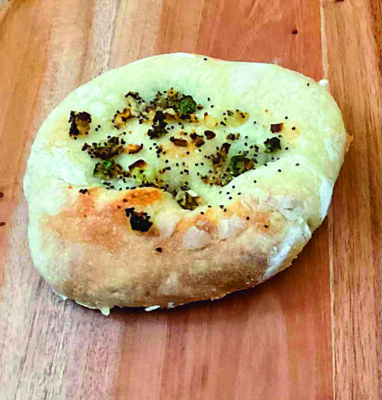Compiled by
Matt Ingersoll, Mya Blanchard, Katelyn Sahagian and Angie Sykeny
Whether your kids are looking to boost their creativity with music, arts or theater, or stay active with sports like soccer, lacrosse or golf, they can find all of those opportunities and more at area summer camps. Did we miss one? Let us know at [email protected].
ACADEMIC ENRICHMENT
College Preparation; Find Your Voice – Jump Start Your College Essay The Derryfield School, 2108 River Road, Manchester, 641-9426, derryfield.org/page/summer/college-prep
What: This intensive writing workshop is designed to create a space for 11th- and 12th-graders to begin drafting their college essay. In the collaborative setting, students will uncover their unique stories and draft an essay that truly reflects their values and life experiences. On the final day of the workshop, a college admissions officer will provide the college perspective on the personal statement and read essay drafts. Who: Students entering grades 11 and 12 When: Monday, June 26, through Friday, July 30, 8:30 to 11:30 a.m. (session is taught remotely) Cost: $395
SAT/ACT Preparation The Derryfield School, 2108 River Road, Manchester, 641-9426, derryfield.org/page/summer/college-prep
What: Students will learn strategies and components of the SAT and ACT from Derryfield teachers and test-prep instructors in one-on-one settings as well as with group work. Who: Students entering grades 11 and 12 When: Verbal sessions run Monday through Friday from 9:15 to 11:45 a.m., and math sessions run from 12:15 to 2:45 p.m., dates offered July 31 to Aug. 4. Cost: Ranges from $395 for half-day sessions to $685 for full-day sessions
ART
Creative Ventures Art Gallery 411 Nashua St., Milford, 672-2500, creativeventuresfineart.com
What: Programs include a nature-inspired art camp for kids and an art camp for teens. Who: Nature-inspired art camp is open to ages 8 through 12, and teen art camp is open to ages 12 through 16. When: Monday, July 31, through Thursday, Aug. 3, from 9 a.m. to noon each day; teen art camp runs Monday, Aug. 7, through Thursday, Aug. 10, from 9 a.m. to noon each day. Cost: $125
Currier Art Center, 180 Pearl St., Manchester, 669-6144, currier.org/education-programs
What: The Currier Museum of Art’s education center will offer five weeks of summer programming. Who: Varies by program. When: Program dates are TBA. Cost: Call for details. Online registration opens in early March.
Kimball Jenkins School of Art 266 N. Main St., Concord, 225-3932, kimballjenkins.com/summer-camp-2023
What: Campers explore artistic media, including sculpture, painting, clay, printmaking, drawing and more, and spend time outdoors, collaborating in group activities and learning about history. This year’s camp week themes include Branching Out, Art Olympics, Into the Wild, Fantasy & Cosplay, Mythology & Folklore, Kinetic Art, Choose Your Own Adventure and Bite Sized Art. Who: Ages 6 and up When: Sessions run Monday through Friday, 9 a.m. to 4 p.m., dates offered June 26 through Aug. 18 Cost: $300 per week.
New England College’s Institute of Arts & Design Pre-College Summer Program, 148 Concord St., Manchester, 623-0313, nec.edu/precollege
What: Two-week residency program for high school students that includes college-level courses covering creative writing and visual arts, and elective courses and workshops in sculpture, mixed media, comic arts, drawing and painting, game design, graphic design, illustration, photography and portfolio development. Campers who complete the program are eligible to earn up to four college credits. Who: Students ages 14 through 18. Space is limited — apply by May 1 for priority consideration. When: July 9 through July 22 Cost: $3,200 for the Resident Program, which includes on-campus housing, meals and materials, and $2,200 for the Commuter Program, which includes meals and materials.
Studio 550 Kids Art Camp Studio 550 Community Art Center, 550 Elm St., Manchester, 232-5597, 550arts.com
What: Programs include an Arts Explorer camp, in which students sample a variety of two-dimensional and three-dimensional art forms, working with paint, paper, pencil and clay; and a Clay camp for teens and tweens, in which students learn the basics of the pottery wheel as well as various sculpting techniques. Who: Arts Explorer camp is open to ages 8 and up; Clay camp is open to ages 11 and up When: Sessions run Monday through Friday, in half-day sessions. Dates TBA. Cost: Call for details.
DANCE
Alicia’s School of Dance 563 Route 106, Loudon, 496-9762, aliciasschoolofdance.com
What: Campers will learn all styles of dance, including tap, jazz, ballet, lyrical and hip-hop, and will also have the opportunity to play games and make crafts. A mini performance will be held on the last day of camp. Who: Ages 6 and up When: Monday, July 17, through Friday, July 21, 10 a.m. to 2 p.m. each day Cost: $130 per child, plus a $25 required deposit. Register by June 30.
Broadway Bound Performing Arts Center 501 Daniel Webster Hwy., Merrimack, 429-8844, broadwayboundpac.com
What: Programs include a two-week Musical Theatre Camp, in which campers will prepare and perform a junior production of Annie; Kids Dance Camp, where campers will practice various styles of dance, singing and acting and participate in theater games and crafts; and an Intensive Dance Camp, modeled after the intensive dance workshops in New York City. Who: Kids Dance Camp is open to ages 4 through 11, and Musical Theatre Camp welcomes campers ages 6 through 15 as performers and campers ages 14 through 18 as assistants and backstage crew. When: Musical Theatre Camp runs July 10 through July 22; Kids Dance Camp runs July 30 through Aug. 4; and Intensive Dance Camp runs Aug. 7 through Aug. 11. Cost: $500 for Musical Theatre Camp and $275 for the Kids Dance Camp and the Intensive Dance Camp. A $50 deposit is required to reserve a spot.
Concord Dance Academy 26 Commercial St., Concord, 226-0200, concorddanceacademy.com
What: Recreational dance camp teaches a variety of dance styles, including ballet, tap, jazz, lyrical and hip-hop. A mini camp for younger children and an intensive camp for serious dancers are also offered. Who: Recreational dance camp is open to ages 4 through 12; mini camp is for ages 3 through 5; and intensive camp is open to ages 8 through 13. When: Monday, July 24, through Friday, July 28, 9 a.m. to 4 p.m. for a full day and 9 a.m. to 1 p.m. for a half day. Cost: $250 for a full-day week and $150 for a half-day week.
Martin School of Dance 288 Route 101, Suite 202, Bedford, 488-2371, martinschoolofdance.com
What: Dance camp features dance instruction, crafts, outdoor activities and more. games, crafts and more. Themed weeks include Princess Tea Party, Under the Sea, Safari Adventure and Tropical Vacation. A three-week dance intensive is also offered. Who: Camp is open to ages 3 through 6, and the intensive program is open to ages 7 through 18. When: Camp dates are offered July 10 through Aug. 25. Intensive runs July 24 through Aug. 11. Programs run Monday through Friday, from 9 a.m. to 5 p.m. each day. Cost: Varies, depending on the program.
Miss Kelsey’s Dance Studio 2626 Brown Ave., Manchester, 606-2820, mkdance.com
What: Dance camps include a half-day afternoon camp with the theme All Things Disney; and two full-day camps with the themes Under the Sea and Spa Retreat. Who: All Things Disney is for ages 6 and up, Under the Sea is for ages 5 and up and Spa Retreat is for ages 8 and up. When: All Things Disney runs Monday, June 26, through Friday, June 30, from 3 to 6 p.m. each day; Under the Sea runs Monday, July 17, through Friday, July 21, from 8 a.m. to 4 p.m.; and Spa Retreat runs from Monday, July 24, through Friday, July 28, from 8 a.m. to 4 p.m. Cost: Call for details
Nancy Chippendale’s Dance Studios 49 Range Road, Building No. 2, Suite A, Windham, 458-7730, chippswindham.com
What: Programs include themed dance camps like Princess Power, Popstar Bop and Royal Academy, as well as a dance boot camp. Who: Themed camps are open to dancers in preschool through grade 2, and boot camp is open to dancers in grades 2 through 12. When: Themed camps are offered July 24 through Aug. 4 and Aug. 21 through Aug. 25 and run Monday through Friday, from 9 a.m. to noon each day; boot camp runs Monday, Aug. 7 through Friday, Aug. 11. Cost: Themed camps are $250 and boot camp is $500
New England School of Dance 679 Mast Road, Manchester, 935-7326, newenglandschoolofdance.com
What: A week-long summer intensive and musical theater workshop provides a comprehensive multi-level experience for dancers with at least two years of dance training that includes technique classes in a variety of dance styles, mind-body wellness sessions, stretch workshops, Progressing Ballet Technique, pilates, dance-related art projects, choreography exploration and more, culminating with a showcase performance for family and friends. Two-day mini camps are also offered for younger dancers. Who: The intensive is open to ages 6 through 19, and the mini camps are for ages 3 through 6. When: The intensive runs Monday, July 24, through Saturday, July 29; mini camps are offered various dates from July 18 through Aug. 10 Cost: Mini camps are $110 each, and the intensive is $750, with a musical theater workshop for an additional $50.
Southern New Hampshire Dance Theater 19 Harvey Road, Bedford, 637-4398, snhdt.org
What: Programs include Princess Camp and Prima Ballerina Camp; the Young Dancer Workshop for beginner and intermediate dancers; a Nutcracker Dance Intensive; and a three-week Summer Intensive for serious dancers. Who: Princess and Prima Ballerina camps are open to ages 3 through 5; Young Dancer Workshop is open to ages 6 through 12; the Nutcracker Intensive is for ages 8 through 11; and the Summer Intensive is for ages 10 and up. When: Princess Camp is offered June 27 through June 29 and July 11 through July 13; Prima Ballerina Camp is offered July 6 through July 8; the Nutcracker Intensive runs Aug. 14 through Aug. 18; the Young Dancer Workshop runs July 17 through July 21; and the Summer Intensive runs July 24 through Aug. 11. Cost: $165 for Princess and Prima Ballerina camp; $225 for Young Dancer Workshop and Nutcracker Intensive; and the Summer Intensive ranges from $750 to $1,500, depending on the number of weeks.
GENERAL INTEREST
Boys & Girls Clubs of Central New Hampshire Locations in Andover, Concord, Epsom, Holderness, Hopkinton, Laconia, New London, Pittsfield, Stoddard, Sutton Warner and Weare, 224-1061, nhyouth.org
What: Each center offers general camps and specialty camps, with activities that include arts and crafts, sports, water games, field trips and more. Who: Children entering kindergarten through 8th grade When: Sessions run Monday through Friday, from the end of the school year through Aug. 25 Cost: $185 per week if registered before May 1, plus a $40 registration fee.
Boys & Girls Club of Greater Salem 3 Geremonty Drive, Salem, 898-7709, salembgc.org
What: Activities include field trips, swimming, gym, games, outdoor play and more. Who: Ages 4 and up When: 10-week sessions run Monday through Friday, dates offered June 19 through Aug. 25 (no camp Monday, July 3, or Tuesday, July 4) Cost: $260 per week ($156 for the shortened week of July 5 through 7), plus a $50 membership fee
Boys & Girls Club of Manchester Camp Foster, 36 Camp Allen Road, Bedford; Union Street Clubhouse, 555 Union St., Manchester; 625-5031, mbgcnh.org
What: A wide variety of activities are available to campers each day. Camp Foster (grades 1 through 7) features daily activities like swimming, arts and crafts, playgrounds, field games, athletics, hiking and canoeing. The Teen Adventure Camp (grades 8 and up) features weekly adventure field trips, like beach trips, hiking and biking. Teen campers split the rest of their days between programming at Camp Foster and the Union Street Clubhouse. The Club also remains open for its oldest campers all summer long with a drop-in program of daily and special activities. Who: Grades 1 through 12 When: Various days and times, dates offered June 19 through Aug. 25 (no camps on Tuesday, July 4). Cost: $185 per week ($150 for the week of July 4), plus a $25 membership fee
Brentwood Recreation Day Camp 190 Route 125, Brentwood, hosted by the Brentwood Parks & Recreation Department, 642-6400, brentwoodnh.gov/recreation What: Traditional day camp with activities like weekly field trips, arts and crafts, team-building activities, games and more. Who: Children entering grades 1 through 8 When: Monday through Friday, 9 a.m. to 4 p.m., dates offered June 26 through Aug. 18 (no camp on Tuesday, July 4). Before and after care are also available. Cost: Online registration of a $100 deposit for Brentwood residents and $150 for non-residents is required to hold your spot. Weekly rates are $150 for residents and $175 for non-residents through June 1. After June 1 they are raised $175 and $200, respectively.
Camp 603 13 Blevens Drive, Concord, 568-8107, camp603.com
What: Activities include trips to Lake Winnisquam for water skiing, wakeboarding, tubing and other water sports; Mount Major, Mount Cardigan and other local mountains for days of hiking; and Hampton Beach for beach trips, swimming and more. Who: Ages 10 to 16 When: Weekly sessions run from Monday through Friday, dates offered July 10 through July 28 Cost: $975/week
Camp Kettleford 26 Camp Allen Road, Bedford, hosted by Girl Scouts of the Green and White Mountains, 888-474-9686, girlscoutsgwm.org
What: Set on 30 wooded acres on the shore of Sebbins Pond, this traditional day camp features swimming, boating, archery, cooking out, day trips and more. Who: Girls who will be entering kindergarten through 8th grade When: Sessions run Monday through Friday from 9 a.m. to 5 p.m., dates offered June 26 through Aug. 18 (closed from Monday, July 3, through Friday, July 7) Cost: $350 per week, or $625 for two-week sessions.
Camp Lincoln 67 Ball Road, Kingston, 642-3361, ymcacamplincoln.org, hosted by Southern District YMCA, sdymca.org
What: A wide variety of programming is available to campers, with activities that include archery, arts and crafts, hiking, boating, basketball, baseball, ropes courses, climbing walls and more. Who: Ages 3 and up When: Sessions run Monday through Friday, dates offered June 19 through Aug. 25 — see program guide online for details on programming as it pertains to each age group Cost: Ranges from $330 to $345 per one-week session, or $660 to $690 per two-week session, depending on the camper’s age.
Camp Lovewell 2nd Nature Academy, 10 Groton Road, Nashua, 881-4815, camplovewell.com
What: Campers will enjoy hiking, field games and sports, swimming, skits and songs, kayaking, arts and crafts, a ropes course and more. Who: Ages 6 to 14 When: Sessions run Monday through Friday, from 9 a.m. to 4 p.m., dates offered June 26 through Aug. 25 (no camp on Tuesday, July 4) Cost: $400 per week for kids entering grades 1 through 3, and $390 per week for kids entering grades 4 through 9. Extended care is also available, from 7:30 to 9 a.m. or from 4 to 5:30 p.m.
Camp Ponemah Hampshire Hills Athletic Club, 50 Emerson Road, Milford, 673-7123, ext. 272, hampshirehills.com/camp-ponemah
What: Day camps feature activities like swimming, tennis, weekly field trips, crafts, dance parties, playgrounds, trails, games and more. Who: Kids entering kindergarten through 7th grade. A full-day camp for teenagers called Troop T is available for campers entering 8th grade, and there is also a half-day camp called Little Warriors for kids ages 3 and 4. When: Sessions run Monday through Friday, dates offered June 12 through Aug. 25 (some weeks are full or have waiting lists; visit the website for the most up-to-date status) Cost: Camp Ponemah starts at $283 per week for Hampshire Hills Athletic Club members and $367 per week for non-members. Troop T is $256 per week for members and $347 for non-members. Little Warriors is $85 for two days and $160 for four days for members and $119 for two days and $228 for four days for non-members.
Camp Seawood 350 Banfield Road, Portsmouth, hosted by Girl Scouts of the Green and White Mountains, 888-474-9686, girlscoutsgwm.org
What: Set among pine forests, wetlands and wildlife, this traditional day camp features archery, cooking out, nature hikes, day trips and more. Who: Girls who will be entering kindergarten through 8th grade When: Sessions run Monday through Friday, from 9 a.m. to 5 p.m., dates offered July 10 through Aug. 4 Cost: $350 per week, or $625 for two-week sessions.
Camp Starfish 12 Camp Monomonac Road, Rindge, 899-9590, campstarfish.org What: Camp Starfish provides structured, nurturing and fun group programs to foster the success and growth of children with emotional, behavioral or learning problems. Who: Kids and teens ages 6 and up When: Weekly camps run from June 25 through Aug. 19 Cost: Rates vary depending on type of camp.
Camp Trek Teen Adventure Camp 116 Naticook Road, Merrimack, hosted by Merrimack Parks & Recreation, 882-1046, merimackparksandrec.org
What: Camp Trek Teen Adventure Camp is a trip- and activity-based summer camp program geared towards campers entering grades 5 to 9 in Fall 2023. Camp Trek is intended as an alternative to the traditional day camp experience found at Merrimack Parks & Recreation’s Naticook Day Camp. Each week of the summer will feature a mix of traditional camp activities, along with five weekly field trips exploring destinations across New England. Camp tuition fees include transportation and admissions fees to all field trip destinations, as well as activities when they are at Wasserman Park. Who: Kids entering grades 5 to 9 When: Nine weekly sessions, from 8 a.m. to 4 p.m. each weekday, dates offered June 19 through Aug. 18 Cost: $320 per week for Merrimack residents, and $370 per week for non-residents
Camp Witzel McKelvie Intermediate School, 108 Liberty Hill Road, Bedford, hosted by the Bedford Parks & Recreation Department, 472-5242, BedfordRecOnline.com What: A traditional summer day camp featuring themed weeks (past themes have been Let’s Go Green and Gold Rush Week), in addition to games, crafts, swimming on Mondays, Tuesdays, Thursdays and Fridays, and weekly field trips on Wednesdays. Who: Ages 6 to 13 When: Sessions run Monday through Friday, 9 a.m. to 4 p.m., dates offered June 26 through Aug. 11. Before and after care is also available. Cost: Varies, depending on how many days per week are chosen and on the camper’s residential status.
Candia Springs Adventure Camps Candia Springs Adventure Park,446 Raymond Road, Candia, 587-2093, candiasprings.com/camps
What: Activities include ziplining, aerial ropes courses, arts and crafts, color wars, nature walks, fire building, shelter building and archery. Each week also features a different theme. Who: Ages 7 to 13 When: Sessions run Monday through Friday, from 9 a.m. to 5 p.m., dates offered June 19 through Aug. 18 Cost: $269 per week; full payment is due by May 1
Dreamers’ Ranch 125 N. Lowell Road, Windham, 327-4449, youthstorm.org
What: Dreamers’ Camp (ages 8 to 12), according to Dreamers’ Ranch’s website, is a faith-based camp hosted in an outdoor setting offering activities like experiential entrepreneurship games, gardening, farm and animal care and more. Other programs include a Little Dreamers’ Camp (ages 6 and 7), a youth cattle program (ages 10 to 14) at Normanton Farms in Litchfield, a cowgirl camp (girls ages 13 and up) and Follow Your Dreams Farm in Derry and a young entrepreneurs program (ages 10 to 17) Who: Ages 6 to 17 When: Dreamers’ Camp runs Monday, July 31, through Thursday, Aug. 4 (Monday and Wednesday, 9 a.m. to 3 p.m., and Thursday and Friday, 9 a.m. to 9 a.m., overnight on the ranch. Little Dreamers’ Camp runs Monday, Aug. 7, through Thursday, Aug. 10, from 9 a.m. to noon. The youth cattle program has three sessions available, Tuesday through Thursday, from 9 a.m. to 3 p.m., dates offered June 20 to June 22, July 18 to July 20 and Aug. 15 to 17. Cowgirl camp runs Friday, Aug. 25, at 9 a.m., overnight through 3 p.m. on Saturday, Aug. 26. Dates and times of the youth entrepreneurs program TBA Cost: Varies depending on the program; see website for details
Granite Base Camp 300 Blondin Road, Manchester, 617-615-0004, experiencebasecamp.org
What: With a focus on character development, leadership skills and personal fitness, this outdoor camp features a variety of hands-on activities, such as archery, swimming, crafts and more. A special family camp program is also available, offering a variety of open areas for families to enjoy activities like arts and crafts, camping and hiking together. Who: Rising 1st- to 5th-graders When: Sessions run Monday through Friday, from 8:15 a.m. to 4 p.m., dates offered July 3 through Aug. 18 (no camp on Tuesday, July 4). The family camp has two sessions on Fridays and Saturdays, dates offered July 21 and July 22 or Aug. 4 and Aug. 5. Cost: $330 for Granite Base Camp and $50 per attendee for family camp
IMAGINE Camps New Morning Schools, 23 Back River Road, Bedford, 669-3591, newmorningschools.com
What: Campers enjoy various cognitive and physical activities that encourage social, emotional and problem-solving skills. There will also be organized gym games, STEAM activities, outside play and themed art projects. School-age campers can enjoy choice-based enrichment activities throughout the day that challenge them to try new things while being in a fun and dynamic environment. Who: Boys and girls entering kindergarten through 6th grade can join the IMAGINE program, and children ages 3 to 6 can join the preschool camp. When: Sessions run Monday through Friday, from 7 a.m. to 6 p.m. (preschool hours are from 9 a.m. to 2 p.m.), dates offered June 12 through Aug. 25 Cost: $325 per week or $75 per day
Naticook Summer Day Camp Wasserman Park, 116 Naticook Road, Merrimack, hosted by Merrimack Parks & Recreation, 882-1046, merrimackparksandrec.org What: Campers participate in a wide variety of activities, including swimming, boating, group games, team building, archery, drama, nature exploration, sports, arts and crafts, special events and more. Who: Kids who will be entering kindergarten through 5th grade. Campers entering 5th grade also have the option to move up to the Camp Trek program for grades 5 through 9; see that listing for details. When: Nine weekly sessions run Monday through Friday, from 8 a.m. to 4 p.m., dates offered June 19 through Aug. 18 Cost: $290 per week for Merrimack residents and $340 per week for non-residents
New Hampshire SPCA New Hampshire Society for the Prevention of Cruelty to Animals Learning Center, 104 Portsmouth Ave., Stratham, 772-2921, nhspca.org What: With various programs combining fun and education, campers will interact with animals and participate in service projects, crafts, games and more. Who: Ages 6 to 12 When: Sessions run Monday through Friday, 8 a.m. to 3:30 p.m. (half days for ages 6 and 7 are 8:30 to 11:30 a.m., or 12:30 to 3:30 p.m.; full days for ages 8 to 12 are from 9 a.m. to 3 p.m. Monday through Thursday, and from 9 a.m. to noon on Friday), offered various weeks from June 26 through Aug. 25 (no camps on Monday, July 3, or Tuesday, July 4) Cost: Ranges from $100 to $325 per week, depending on the number of days, the camper’s age and the length of each session. Registration begins March 6.
Pelham Veterans Memorial Park Summer Camp 109 Veterans Memorial Parkway, Pelham, 635-2721, pelhamweb.com
What: Activities include swimming, kayaking, field games, mock olympics, arts and crafts, talent shows and field trips. Who: Ages 6 to 13 When: Sessions run Monday through Friday, from 9:30 a.m. to 3:30 p.m., dates offered July 10 through Aug. 18 Cost: $575 for the full six-week session
SummerQuest and Enrichment Camp at World Academy 138 Spit Brook Road, Nashua, 888-1982, worldacademynh.com
What: Activities at SummerQuest (kindergarten through grade 4) include arts and crafts, games, cooking activities and much more, all intended to encourage the child’s creativity and imagination. The Enrichment Camp (grades 4 through 8) features a project-based learning curriculum integrating English and math skills, along with theme-based activities like swimming, field trips, and team-building exercises. Who: Kids entering kindergarten through grade 8 When: Sessions run Monday through Friday, from 8 a.m. to 5 p.m. for SummerQuest and from 8 a.m. to 4 p.m. for the Enrichment Camp, dates offered June 20 through Aug. 25 Cost: $320 per week for SummerQuest and $350 per week for the Enrichment Camp. Extended hours are also available for both camps for an additional $20 per week.
UNH Youth Programs and Camps University of New Hampshire, Thompson Hall, 105 Main St., Durham, 862-7227, unh.edu/youthprograms
What: More than 50 programs are offered in a variety of areas, from academic enrichment and creative arts to athletics, STEM and traditional camp recreation. See website for a full list. Who: Boys and girls ages 5 and up When: Various dates/times from June through August Cost: Varies depending on the program.
YMCA Allard Center of Goffstown Branch of Granite YMCA, 116 Goffstown Back Road, 497-4663, graniteymca.org
What: Kids at Camp Halfmoon (ages 6 to 11) and Camp Quartermoon (ages 4 to 5) will enjoy weekly themes and activities like swimming, field games, sports, arts and crafts, and more. Specialty programs are also available including sports and specialty camps (ages 6 to 13), Discovery Camp (ages 6 to 11), gymnastics camps (ages 4 to 15), tennis camp (ages 7 to 15), adventure camps (ages 10 to 14), teen camps (ages 12 to 16), leadership camps (ages 14 to 16), and more. Who: Ages 4 to 16 When: Sessions run Monday through Friday, from 9 a.m. to 4 p.m., dates offered June 26 through Aug. 25 (no camp on Monday, July 3, or Tuesday, July 4). Before and after care are both also available for an extra charge. Cost: Varies by week and camp.
YMCA Day Camp of Hooksett Branch of Granite YMCA, Hooksett Memorial School, 5 Memorial Drive, Hooksett, 497-4663, graniteymca.org
What: Campers participate in weekly themes and activities like swimming, field games, sports, arts and crafts and more. Teen camp (ages 11 to 13) and leadership camps (ages 14 to 16) are also available. Who: Ages 5 to 16 When: Sessions run Monday through Friday, from 8 a.m. to 4 p.m., dates offered June 26 through Aug. 25 (no camp on Monday, July 3, or Tuesday, July 4). Before and after care are both also available for an extra charge. Cost: Varies by week and camp.
YMCA of Concord Branch of Granite YMCA, 15 N. State St., Concord, 228-9622, graniteymca.org
What: Kids at Camp Mowkawogan (ages 5 to 11) will enjoy weekly themes and activities like swimming, field games, sports, arts and crafts and more. Leadership camp (ages 13 to 14) is also available. Who: Ages 5 to 14 When: Sessions run Monday through Friday, from 7 a.m. to 5:30 p.m., dates offered June 26 through Aug. 25 (no camp on Monday, July 3, or Tuesday, July 4). Cost: Varies by week and camp.
YMCA of Downtown Manchester Branch of Granite YMCA, 30 Mechanic St., Manchester, 623-3558, graniteymca.org
What: Kids at Camp Namoskeag will enjoy weekly themes and activities like swimming, field games, sports, arts and crafts, and more. Specialty programs are also available including sports camps, specialty camps and more. Who: Ages 6 to 14 When: Sessions run Monday through Friday, from 8:30 a.m. to 4 p.m., dates offered June 26 through Aug. 25 (no camp on Monday, July 3, or Tuesday, July 4). Before and after care are both also available for an extra charge. Cost: Varies by week and camp.
YMCA of Greater Londonderry Branch of Granite YMCA, 206 Rockingham Road, Londonderry, 437-9622, graniteymca.org
What: Kids at Camp Pa-Gon-Ki (kindergarten to Grade 9) will enjoy weekly themes and activities like swimming, field games, sports, arts and crafts, and more. Specialty programs are also available, including Windham Explorers Camp (kindergarten to Grade 8), Derry Voyagers Camp (kindergarten to Grade 5), sports and specialty camps (grades 2 to 8), leadership camps (ages 14 to 16) and more. Who: Ages 5 to 16 When: Sessions run Monday through Friday, from 8 a.m. to 4 p.m., dates offered June 26 through Aug. 25 (no camp on Monday, July 3, or Tuesday, July 4). Before and after care are both also available for an extra charge. Cost: Varies by week and camp.
YMCA of Greater Nashua 10 Cotton Road, Suite 1, Nashua, nmymca.org/summercamps
What: Summer camps at the YMCA of Greater Nashua are all about discovery — kids have the opportunity to explore nature, find new talents, try new activities, build on sports skills, make new friendships and more. Day camp options are available for ages 3 through Grade 12 at each of the YMCA of Greater Nashua’s branches (24 Stadium Drive, Nashua; Westwood Park, 90 Northwest Blvd., Nashua; 6 Henry Clay Drive, Merrimack) as well as at Camp Sargent (141 Camp Sargent Road, Merrimack) Who: Ages 3 and up When: Various dates offered throughout the summer, beginning in June and through Sept. 1 Cost: Varies.
YMCA of Strafford County Branch of Granite YMCA, 63 Lowell St., Rochester, 332-7334, graniteymca.org
What: Kids at Camp Coney Pine (ages 4 to 12) will enjoy weekly themes and activities like archery, adventure, swimming, arts and crafts, and more. Specialty programs are also available including coding camp (ages 8 to 12), lego camp (ages 8 to 12), fort building camp (ages 5 to 12), ultimate sports camp (ages 8 to 12), art camp (ages 8 to 12), teen trip camp (ages 13 to 14), leadership camp (ages 13 to 14) and more. Who: Ages 4 to 14 When: Sessions run Monday through Friday, from 8:30 am to 4:30 pm, dates offered June 26 through Aug. 25 (no camp on Monday, July 3, or Tuesday, July 4). Before and after care are both also available for an extra charge. Cost: Varies by week and camp selection.
YMCA of the Seacoast Branch of Granite YMCA, 176 Tuttle Lane, Greenland, 431-2334, graniteymca.org
What: Kids at Camp Gundalow (ages 5 to 13) will enjoy weekly themes and activities like swimming, field games, sports, arts and crafts and more. Specialty programs are also available including ultimate sports camp (ages 8 to 12), theater camp (ages 8 to 12), lego camp (ages 8 to 12), football camp (ages 8 to 12), soccer camp (ages 8 to 12), art camp (ages 8 to 12), leadership camp (ages 14 to 15) and more. Who: Ages 5 to 15 When: Sessions run Monday through Friday, 8:30 a.m. to 4:30 p.m., dates offered June 26 through Aug. 25 (no camp on July 3 or 4). Before and after care are both also available for an extra charge. Cost: Varies by week and camp selection.
MULTIMEDIA
Flip the Script Camp SEE Science Center, 200 Bedford St., Manchester, 669-0400, see-sciencecenter.org
What: Campers work together to write, film, direct, star in, and edit science videos that are creative, factual, and fun. Who: Ages 10 to 14 When: One-week session runs Monday, July 24, through Friday, July 28, from 9 a.m. to 3 p.m. each day. Cost: $300 for the week
Londonderry Access Center Media Camp 281 Mammoth Road, Londonderry, 432-1100, lactv.com
What: Kids will learn to make better-quality videos appropriate for YouTube, Instagram or TikTok, composing shots and learning about editing and graphic design. They’ll learn not only about short-form videos but also longer television shows in a professional studio setting, where they get to be the camera operator, sound technician and director. New this year is a podcast studio, where campers can put their voiceover skills and podcasting ideas to the test. Who: Rising 5th- to 8th-graders When: Two-week session runs Monday through Friday, from 10 a.m. to 2:30 p.m., dates offered July 10 through July 21 (campers must be able to attend for the entire two week session) Cost: $85
MUSIC
Concord Community Music School 23 Wall St., Concord, 228-1196, ccmusicschool.org
What: Programs include a weekly Music & Movement program for young children and their caregivers that includes songs, stories, movement games, rhythm instruments, improvisation, art, dance and more; a Piano Dynamos Camp for piano students with at least one year of study that includes instruction in ear training, theory, sight reading, improvisation, practice strategies and more; Folk Frontier Camp for string players with at least one year of study that includes building musical skills, learning about folk traditions and performing in a group; Summer Jam Camp, where campers of all experience levels can play their chosen instruments in a collaborative setting, exploring a variety of musical genres while developing ensemble skills, working in a recording studio and creating an album together; and Creative Arts Camp, where campers will create musical, dance and visual arts pieces Who: Music & Movement is open to children ages 5 months through 7 years and their caregivers; Piano Dynamos is open to ages 9 through 15; Folk Frontier is open to ages 8 through 16; Summer Jam is open to students entering grades 5 through 12; and Creative Arts is open to students entering grades 1 through 6. When: Music & Movement is held on Tuesday mornings, June 6 through July 18; Piano Dynamos runs Monday, June 26, through Friday, June 30, (full-day sessions); Folk Frontier runs Monday, July 10, through Friday, July 14 (full-day sessions); Jam Camp runs Monday, July 17, through Friday, July 21 (half-day sessions); and Creative Arts runs Monday through Friday and is offered for three weeks, from July 24 through Aug. 11. Cost: $350 for Piano Dynamos, Folk Frontier and per week of Creative Arts; $275 for Jam Camp; rates for Music & Movement are TBA.
Manchester Community Music School 2291 Elm St., Manchester, 644-4548, mcmusicschool.org
What: AtMusical Exploration Camp, campers will explore a variety of musical instruments, play musical games and grow in their musical knowledge. Who: Grades 1 through 3, and grades 4 through 6 When: Camp for grades 1 through 3 runs Monday, July 31, through Friday, Aug. 4, from 9 a.m. to noon; camp for grades 4 through 6 runs Monday, Aug. 7, through Friday, Aug. 11, from 9 a.m. to noon each day. Cost: $225
Nashua Community Music School 2 Lock St., Nashua; outdoor programs will be held at Greeley Park Bandshell, 100 Concord St., Nashua, 881-7030, nashuacms.org What: Outdoor music camp themes include Instrument Safari, Broadway Babies and Music Around the World. Indoor music camp themes include Broadway Week, Rise Up & Create and DJ Camp. Three-day ensemble programs for preteens and teens include Chamber Ensemble, Rock Band and Voices of Steel. Who: Outdoor camps are for ages 4 through 7; indoor camps are for ages ranging from 8 through 14, depending on the camp; and ensemble programs are for ages 12 through 17. When: Outdoor and indoor camp weeks are offered July 10 through July 28 and run Monday through Friday, outdoor camp in half-day sessions, and indoor camp in full-day sessions. Ensemble programs run on various dates in August. Cost: $185 for outdoor camps, $325 for indoor camps, and $150 for ensemble programs.
Walden School Young Musicians Program 18 Lehmann Way, Dublin, 415-648-4710, waldenschool.org/young-musicians-program
What: A five-week music residency camp where campers study musicianship, composition, improvisation, music theory, computer music and chorus at the school’s Dublin campus. Who: Ages 9 to 18 When: June 24 through July 30. An abbreviated three-week program is available for students who have not yet completed 8th grade. Apply by April 5. Cost: $9,300 for the five-week residency, which includes full tuition, room and board; $6,200 for the abbreviated three-week residency. There is a $55 non-refundable application fee. Need-based financial aid is available.
NATURE
Beaver Brook Nature Camps Beaver Brook Association, 117 Ridge Road, Hollis, 465-7787, beaverbrook.org What: Campers will explore, learn and play outside, building forts in the forest, catching frogs, cooking at the campfire, hiking, drawing, learning survival skills and more. Who: Pre-K through 9th grade When: Sessions run from June 26 through Aug. 11, 9 a.m. to 3 p.m. Cost: TBA; registration opens March 1 for Beaver Brook Association members, March 6 for non-members
Educational Farm Camp Educational Farm at Joppa Hill, 174 Joppa Hill Road, Bedford, 472-4724, theeducationalfarm.org
What: Each week features a different theme based on animals living at the farm. Campers will have the opportunity to explore the farm and forest grounds, interact with the animals, and engage in a variety of hands-on learning experiences. Who: Ages 5 to 8 When: Sessions run Monday through Friday, half days from 9 a.m. to noon, and full days from 9 a.m. to 4 p.m., dates offered June 19 through Aug. 18 Cost: $175 per half-day week, $325 per full-day week
Lake Discovery Family Days New Hampshire Boat Museum, 399 Center St., Wolfeboro Falls, 569-4554, nhbm.org
What: This program features a variety of hands-on activities related to New Hampshire’s lakes, rivers and streams, including boating safety, boat games and building, science experiments, arts and crafts, map-making and more. Who: Grades K through 5 When: Thursdays, June 29, July 27 and Aug. 10, from 10:30 a.m. to noon Cost: Free
New Hampshire Audubon Nature Day Camps McLane Audubon Center, 84 Silk Farm Road, Concord; Massabesic Audubon Center, 26 Audubon Way, Auburn; 224-9909, nhaudubon.org
What: Programs include a half-day Wonders Camp for ages 4 and 5; Discovery Camp (ages 6 through 9), featuring hikes, crafts, storytelling, games and live animal presentations; Explorers Camp (ages 10 through 12), which includes field trips, hiking, swimming and conservation projects; and Leaders-in-Training (ages 13 through 15) for teens interested in building leadership skills and becoming camp counselors in the future. Who: Ages 4 to 15 When: Sessions run Monday through Friday, 9 a.m. to 4 p.m. (9 a.m. to noon for Wonders Camp), dates offered June 26 through Aug. 25 Cost: Ranges from $180 to $300.
Paleontology Camp North End Montessori School, 698 Beech St., Manchester, 621-9011, northendmontessori.com
What: Campers will learn about fossils and dinosaurs, from Allosaurus to Zephyrosaurus, as well as various aspects of paleontology, from archeological digs to identifying dinosaur skeletons. Who: Ages 3 to 10 When: Summer session runs June 19 through Sept. 1 Cost: Call for details
Pony Farm Summer Camp Touchstone Farm, 13 Pony Farm Lane, Temple, 654-6308, touchstone-farm.org
What: The camp integrates horseback riding into its program, and each camper has a horse or pony of her own during her stay to ride and care for. Campers may also bring their own horses to ride. Small group riding lessons are also offered. Who: Girls ages 8 to 14 When: Sessions run Sunday through Saturday, dates offered June 25 through Aug. 12 Cost: $1,100 for a one-week session or $2,150 for a two-week session, with a 50 percent deposit required to hold the spot.
Squam Lakes Natural Science Center 23 Science Center Road, Holderness, 968-7194, nhnature.org
What: Programs include week-long outdoor natural adventure camps taught by experienced naturalists and educators. Who: Preschoolers through 12th grade When: Sessions run Monday through Friday, dates offered June 26 through Aug. 11 Cost: Ranges from $390 to $435, depending on the program; registration will open in March
OVERNIGHT
Camp Allen 56 Camp Allen Road, Bedford, 622-8471, campallennh.org
What: Activities include nature exploration, creative arts, games, sports, music and more. Residential and day camp options available. Who: Campers ages 6 and up When: Sessions run various days and durations. Residential camp runs from June 11 to Aug. 25. Day camp runs from June 19 to Aug. 18 (some weeks are full or have waiting lists; visit the website for the most up-to-date status) Cost: Day camp programs are $475 per week; residential camp programs range from $1,050 to $2,250 per week
Camp Bernadette 83 Richards Road, Wolfeboro, 931-5500, bfcamp.com
What: Traditional overnight camp for girls, with activities like swimming, kayaking, canoeing, baseball, softball, lacrosse, ropes courses, archery, arts and crafts and more. Who: Girls ages 5 to 16 When: Residential camp runs for two-week, four-week, six-week or eight-week sessions, dates offered June 25 to Aug. 12 Cost: Starts at $1,950 per two-week session
Camp Birch Hill 333C Birch Hill Road, New Durham, 859-4525, campbirchhill.com What: Campers can choose their own schedule from dozens of available activities, including land sports, water sports, arts and crafts, zip-lining, rock-climbing, ropes courses and more. Who: Boys and girls ages 6 to 16 When: Two-, four- and six-week sessions run various days/weeks from Sunday, June 25, through Saturday, Aug. 5 (some sessions may be full or near capacity — see website for the most up-to-date details) Cost: Starts at $3,600 for a two-week session, $6,400 for a four-week session and $7,600 for a six-week session; payment is due by June 1
Camp Brookwoods 34 Camp Brookwoods Road, Alton, 875-3600, christiancamps.net
What: A Christian-based outdoor camping experience for boys Who: Boys ages 8 to 16 When: Various one-week, two-week, four-week or eight-week sessions are available, dates offered June 25 to Aug. 19 (some weeks are full or have waiting lists; visit the website for the most up-to-date status) Cost: Starts at $1,345 for a one-week session and $2,745 for a two-week session
Camp Carpenter 300 Blondin Road, Manchester; hosted by Daniel Webster Council, Boy Scouts of America, 625-6431, nhscouting.org
What: Located on the outskirts of Manchester, Camp Carpenter is a 250-acre wooded property offering outdoor activities such as archery, BB gun shooting, field sports, scout skills and more. Camp Carpenter consists of nine campsites, six Adirondack shelters, eight unheated cabins and program theme areas. Who: Rising 1st- to 5th-graders When: Overnight sessions are from Sunday through Thursday, dates offered July 9 through Aug. 10. Cost: $600
Camp Deer Run 34 Camp Brookwoods Road, Alton, 875-3600, christiancamps.net What: A Christian-based outdoor camping experience for girls Who: Girls ages 8 to 16 When: Various one-week, two-week, four-week or eight-week sessions are available, dates offered June 25 to Aug. 19 (some weeks are full or have waiting lists; visit the website for the most up-to-date status) Cost: Starts at $1,345 for a one-week session and $2,745 for a two-week session
Camp Deerwood Route 3, Deerwood Road, Holderness, 279-4237, campdeerwood.com
What: A resident camp for boys with activities like ceramics, mountain biking, riflery, archery, tennis, woodworking, canoeing, kayaking, waterskiing, swimming and more. Who: Boys ages 8 to 15 When: One full eight-week session or two half four-week sessions are available, dates offered June 24 through Aug. 12 Cost: $5,900 for a half session and $10,200 for the full session
Camp Fatima 32 Fatima Road, Gilmanton Iron Works, 931-5500, bfcamp.com What: Traditional overnight camp for boys, with activities like swimming, kayaking, canoeing, baseball, softball, lacrosse, ropes courses, archery, arts and crafts and more. Who: Boys ages 5 to 16 When: Residential camp runs for two-week, four-week or six-week sessions, dates offered June 25 to Aug. 12 Cost: Starts at $1,950 per two-week session
Camp Foss 242 Willey Pond Road, Strafford, 269-3800; hosted by the Granite YMCA, 232-8642, graniteymca.org
What: Campers enjoy a traditional camp experience with arts and crafts, archery, various sports, swimming, whitewater rafting, ropes courses and more. Who: Girls ages 8 through 15 When: One-week sessions offered each week from Sunday, June 25, through Saturday, Aug. 12; two-week sessions are offered from Sunday, June 25, through Saturday, Aug. 5 Cost: $1,350 for one week and $2,300 for two weeks.
Camp Fully Involved New Hampshire State Fire Academy, 222 Sheep Davis Road, Concord, [email protected], campfullyinvolved.com
What: Camp for girls considering a career in firefighting or emergency medical services. Curriculum provides a comprehensive overview of the firefighting profession through hands-on drills and activities. Please note that this camp is very intense and physically demanding. Who: Girls ages 14 through 20 When: Sunday, July 30, through Friday, Aug. 4 Cost: $400
Camp Gottalikeachallenge Brewster Academy, 80 Academy Drive, Wolfeboro; Lions Camp Pride, 180 Lions Camp Pride Way, New Durham; 868-2140, campgottalikeachallenge.org
What: Camp Gottalikeachallenge is a one-week overnight creativity camp. Campers dabble in plenty of hands-on learning and challenging activities, from muscle-stretching games to programs focusing on critical thinking, leadership skills, problem-solving and teamwork. Who: Ages 10 to 14 (going into grades 5 to 9) When: Overnight sessions run Sunday through Friday, dates offered July 30 to Aug. 4 (at Lions Camp Pride) and Aug. 6 to Aug. 11 (at Brewster Academy) Cost: $775; financial assistance is available. A 10 percent early-bird discount applies for registrations submitted by March 31.
Camp Kabeyun 43 Camp Kabeyun Road, Alton Bay, 875-3060, kabeyun.org
What: A resident camp for boys with activities like archery, arts and crafts, canoeing, fishing, kayaking, rock climbing, ropes courses, stand-up paddleboarding and more. Who: Boys ages 7 to 16 When: Two-week, four-week, six-week and eight-week sessions are available, dates offered June 25 through Aug. 18 (some weeks are full or have waiting lists; visit the website for the most up-to-date status) Cost: Starts at $4,490 for an introductory two-week session
Camp Mi-Te-Na 65 YMCA Road, Alton, 776-3000; hosted by the Granite YMCA, 232-8642, graniteymca.org
What: Campers enjoy a traditional camp experience with arts and crafts, archery, various sports, swimming, whitewater rafting, ropes courses and more. Who: Boys ages 8 through 15 When: One- and two-week sessions offered from Sunday, June 25, through Saturday, Aug. 19 Cost: $1,350 for one week and $2,300 for two weeks; discounts are available for current Granite YMCA members
Camp Quinebarge 100 Sibley Road, Moultonborough, 253-6029, campquinebarge.com
What: An overnight camp offering activities like swimming, boating, fencing, archery, horseback riding, ropes courses, a zip-line and much more. Who: Ages 6 to 16 When: Residential camp runs for two-week, four-week, six-week or eight-week sessions, dates offered June 25 to Aug. 19 Cost: Starts at $3,925 per two-week session
Camp Sno Mo Hidden Valley Reservation, 260 Griswold Lane, Gilmanton Iron Works, hosted by Easterseals, 364-5818, easterseals.com/nh
What: Campers participate in activities like water sports, hiking, archery, ecology, riflery, adaptive horseback riding, wood working, black smithing and more. Who: Children and young adults ages 11 through 21 with disabilities and special needs When: Sessions run overnight Sunday to Friday, dates offered June 25 through Aug. 18, with an additional week from Aug. 20 to Aug. 25 for campers ages 22 and up Cost: Ranges from $1,400 to $1,900
Camp Walt Whitman 1000 Cape Moonshine Road, Piermont, 1-800-657-8282, campwalt.com
What: An co-ed overnight camp offering activities like ceramics, woodworking, drama and music programs, ropes courses, weekly hikes, whitewater rafting, sports and more. A one-week program for families is also available in August. Who: Boys and girls entering grades 2 through 11 When: Several sessions are available throughout the summer, dates offered June 25 through Aug. 11. The one-week Family Camp runs from Monday, Aug. 14, through Friday, Aug. 18 Cost: Ranges from $1,750 to $15,000, depending on the length of each session
Cohen Camps Camp Tel Noar, 167 Main St., Hampstead, 329-6931, camptelnoar.org; Camp Tevya, 1 Mason Road, Brookline, 673-4010, camptevya.org; cohencamps.org
What: Jewish educational and cultural camps where campers will enjoy swimming, boating, outdoor learning, athletics, arts and crafts, plus shira (singing) and rikud (Israeli dancing). Who: Grades 2 through 10 When: Session dates offered Wednesday, June 28, through Wednesday, Aug. 16 Cost: Starts at $7,000 for the first session (June 28 through July 23) and $6,700 for the second session (July 24 through Aug. 16)
New Hampshire Police Cadet Training Academy New Hampshire Technical Institute, 31 College Drive, Concord, nhpcta.org
What: This program is designed to help young people develop their skills and knowledge of law enforcement and to refine their life skills in the future. Who: Ages 14 to 20 When: Saturday, June 24, through Friday, June 30 Cost: TBA; applications should be available by March 1
Water Monkey Camp 298 Merrymeeting Road, New Durham, 617-855-9253, watermonkeycamp.com
What: Campers will enjoy wakeboarding, waterskiing, wakesurfing and wakeskating on Merrymeeting Lake in New Durham. Who: Ages 10 through 17 When: Sessions run Sunday through Saturday, dates offered June 18 through Aug. 11 Cost: $2,950/week, all-inclusive.
Windsor Mountain Summer Camp 1 World Way, Windsor, 478-3166, windsormountain.org
What: A co-ed overnight camp offering a variety of activities, including sports, arts, music, swimming, boating, ropes courses, cooking, videography and more. Who: Ages 7 through 16 When: Two full-length sessions are offered, each lasting four weeks. Dates run June 25 through July 19, and July 23 through Aug. 16. Mini sessions are also available within those dates (some weeks are full or have waiting lists; visit the website for the most up-to-date status) Cost: $7,295 for each full-length session; mini session rates range from $3,795 to $4,395
SCIENCE
Aviation Summer Camp: “Flights of Discovery” Aviation Museum of New Hampshire, 27 Navigator Road, Londonderry, 669-4820, aviationmuseumofnh.org What: Campers will learn about aviation and aerospace by engaging in curriculum-based lessons, hands-on activities and challenges. Flight simulators, wind tunnels and guest speakers will help students better understand the many different aviation careers through a hands-on approach. Field trips are incorporated into the end of each lesson to help kids see what they learned in practice. Two programs are available: Level 1 (ages 10 to 13) and Level 2 (ages 14 to 17). Core subjects for both will include aeronautics and aerodynamics, aircraft structure and function, aviation history, airports, astronomy and astrology, space exploration and more. Who: Ages 10 to 17 When: Sessions run Monday through Friday, from 9 a.m. to 4 p.m., dates offered July 10 through Aug. 3; a special end-of-camp field day will be held on Aug. 3, complete with pizza delivered by helicopter. Cost: $450 per week, or $1,800 total for the full four-week program.
Brainwave STEAM Camps 2nd Nature Academy, 10 Groton Road, Nashua, 881-4815, 2ndnatureacademy.com/brainwave
What: A variety of STEAM day camps that are all about creative exploration and mind expansion, with themes like science, technology, engineering, arts and mathematics. Who: Ages 6 through 14 When: Sessions run Monday through Friday, dates offered June 26 through Aug. 25 Cost: Ranges from $250 to $440 per week, depending on the session, plus a $35 registration fee; includes all supplies. Extended care is available at an additional cost.
Camp Summer Science SEE Science Center, 200 Bedford St., Manchester, 669-0400, see-sciencecenter.org
What: Through hands-on activities, campers will explore four topics — Chemistry Capers, Earth, Space & the Universe, Exhibit Design & Prototype and Reverse Engineering. Who: Ages 7 to 13 When: Sessions run Monday through Friday, from 9 a.m. to 3 p.m., dates offered July 10 through July 14, or July 17 through July 21 Cost: $300 for the week.
iSpy Camp SEE Science Center, 200 Bedford St., Manchester, 669-0400, see-sciencecenter.org
What: This camp will encourage kids to use their investigation skills in an introduction to crime scene investigation, espionage, and forensic science. Who: Ages 7 to 13 When: Sessions run Monday through Friday, from 9 a.m. to 3 p.m., dates offered July 10 through July 14, or July 17 through July 21 Cost: $300 for the week.
LEtGO Your Mind Multiple locations throughout New Hampshire, 731-8047, letgoyourmind.com
What: Campers explore STEM subjects through activities with Lego bricks, introduction to robotics, stop-motion animation, and programming Minecraft. Who: Ages 4 through 14 When: Sessions run Monday through Friday, 9 a.m. to 3 p.m., dates offered June 19 through Aug. 18. Half days from 9 a.m. to noon are also available for kids ages 4 and 5 Cost: Starts at $385 per week for a full day and $225 per week for a half day. Before- and after-school care is also available.
Manchester Community College Camps 1066 Front St., Manchester, 206-8161, mccnh.edu
What: Week-long summer day camps with programs that include Nuts, Bolts and Thingamajigs, STEM Camp, Solid Modeling and Robotics Who: Rising 6th- to 8th-graders When: Sessions run Monday through Friday from 8:45 a.m. to 2:30 p.m., dates offered from July 10 through Aug. 3, depending on the camp Cost: $175 per week
McAuliffe-Shepard Discovery Center 2 Institute Drive, Concord, 271-7827, starhop.com
What: Campers will learn about astronomy, aviation and Earth science through hands-on activities and adventures. This year’s seven themes are “Blast Off!,” “Storm Chasers,” “Up, Up, and Away!,” “Codename: Robot Camp,” “Discover the Dinosaurs,” “So You Want to be an Astronaut?” and Star Hunters. Who: General age range is 5 to 14 but varies depending on the program theme When: Most sessions run Monday to Friday, from 9 a.m. to 4 p.m., dates offered June 26 through Aug. 11 (no programs Tuesday, July 4, or Wednesday, July 5) Cost: Ranges from $210 to $345 per week
SPORTS
Auburn Parks & Recreation Summer Basketball Camp 483-5052, auburnparksandrec.com, find them on Facebook @auburnnhparksandrec
What: Campers will have the opportunity to work on ball handling and defensive skills as well as how to move and handle themselves on the court, practicing in daily full scrimmages. Who: Students entering grades 5 through 8 When: A one-week session will be held from Monday, Aug. 14, through Friday, Aug. 18, from 8:30 a.m. to 2 p.m. inside the gymnasium of Auburn Village School (11 Eaton Hill Road, Auburn) Cost: $199 for the full week
Caramba Soccer Skills Camp Locations in Concord, Nashua, Canterbury and Chichester, 496-3579, soccerskillscamp.org
What: Soccer program specializes in skill development for goaltenders, defenders, midfielders and strikers. Players are divided by age for the first half of the day, then by ability level for the second half. Who: Grades 1 through 12 When: Sessions run Monday through Friday, times vary depending on the location (a half-day option is also available), dates offered July 10 through Aug. 3 Cost: $235 per week for a full-day program, and $150 per week for a half-day program
Challenger Sports Soccer Camps Various NH locations, 800-878-2167, ext. 280, challengersports.com
What: Campers will develop core soccer skills and understanding of the game as well as sportsmanship and leadership skills. Locally, this year’s programs take place in conjunction with the New Boston Recreation Department, the Weare Athletic Club, the Windham Soccer Association, the Hopkinton Recreation Department, the Pelham Parks & Recreation Department, the Gilford Recreation Department, the Gilmanton Youth Organization, the Exeter Parks & Recreation Department and the Northwood Recreation Department. Who: Ages 2 to 14 When: Sessions run Monday through Friday; exact dates and times vary depending on the location; see website for details Cost: Varies, depending on the camp and the location
The Derryfield School Co-ed Basketball Camp 2108 River Road, Manchester, 641-9426, derryfield.org/summer/sports-camps
What: Run by Derryfield School faculty member Courtney Cheetham, this camp will include skills stations, breakout groups, games, a contest of the day and other activities revolving around basketball. Who: Rising 4th- to 10th-graders When: Monday, June 26, through Friday, June 30, 9 a.m. to 2:30 p.m. Cost: $250, with a $30 lunch option (lunch paid separately)
The Derryfield School Field Hockey Skills & Shooting 2108 River Road, Manchester, 641-9426, derryfield.org/summer/sports-camps
What: Derryfield School head field hockey coach Kelsey Federico will lead this three-day camp. The first hour will focus on the fundamentals of passing and receiving for players of all positions, and the camp will then progress into goal scoring drills. Who: Rising 6th- to 12th-grade field hockey players When: Sessions run Monday through Wednesday, from 1 to 3 p.m., dates offered June 26 to June 28 or Aug. 7 to Aug. 9 Cost: $150
The Derryfield School Field Hockey Goalkeeping Camp 2108 River Road, Manchester, 641-9426, derryfield.org/summer/sports-camps
What: Derryfield School head field hockey coach Kelsey Federico will lead this three-day camp, which will focus on the fundamentals of saving and clearing, as well as diving, split saves and more. Who: Rising 6th- to 12th-grade field hockey players When: Sessions run Monday through Wednesday, from 2 to 4 p.m., dates offered June 26 to June 28 or Aug. 7 to Aug. 9 Cost: $150
The Derryfield School Summer Strength & Conditioning 2108 River Road, Manchester, 641-9426, derryfield.org/summer/sports-camps
What: Program focuses on the essentials of foam rolling, mobility and motor control, as well as proper strength training and conditioning, to maximize the results of a camper’s performance and minimize the risk of injury. Who: Rising 8th-graders to newly graduated 12th-graders When: Sessions run June 20 through Aug. 3 Cost: Ranges from $120 to $450, depending on the number of sessions taken and the length of each
Fisher Cats Baseball & Softball Camps Northeast Delta Dental Stadium, 1 Line Drive, Manchester, 641-2005, nhfishercats.com
What: Instructed by New Hampshire Prospects Baseball Club players and Fisher Cats front office staff, these camps teach the fundamentals of the game, including throwing, fielding, hitting and pitching. Who: Boys and girls ages 6 through 15 When: Sessions run Monday through Friday, 8:30 a.m. to noon, offered April 24 through April 28; June 26 through June 30; July 24 to July 25 and July 27 to July 28; and Aug. 21 through Aug. 25 Cost: Ranges from $150 to $175 per week, depending on the session. Campers also receive a T-shirt and complimentary tickets to an upcoming Fisher Cats home game (dates vary depending on the sessions chosen).
Foster’s Golf Camp Derryfield Park, 581 Bridge St., Manchester, 622-1553, fostersgolfcamp.com
What: Campers travel to different par-3 courses across New Hampshire and participate in practice clinics, chipping and putting contests, time on the driving range and at least nine holes of golf with instruction. Trophies and certificates are awarded at the end of the session. Drop-offs and pick-ups are at Derryfield Park in Manchester. Golf camps take place at a variety of locations, depending on the day of the week. Who: Ages 7 to 16 of all experience levels. When: Sessions run Monday through Friday, from 8 a.m. to 4 p.m., dates offered April 24 through April 28 and June 19 through Sept. 1 (no camp the week of July 4) Cost: $325 per week
Hogan Camps Various NH locations, 340-1719, hogancamps.com
What: Specialty basketball and soccer camps under the direction of Paul Hogan, retired athletics director and men’s basketball coach at NHTI in Concord. Programs include the Point Guard Basketball Camp, Rip City Basketball Camp, Shooter’s Gold Basketball Camp and a Specialty Basketball Camp Who: Boys and girls entering 1st grade and up; individual camps vary on the age range When: Sessions run various days and times, dates offered June 23 through Aug. 3 Cost: Varies.
In the Net Sports Academy Locations in Bedford, Hooksett, Manchester and Nashua, 429-0592, inthenetsportsacademy.com
What: A variety of sports camps, including baseball, softball, basketball, tennis, field hockey, lacrosse and volleyball Who: Ages 3 through high school When: Sessions run Monday to Friday, with half-day, full-day, evening and overnight options, dates offered throughout June, July and August Cost: Ranges, depending on the sport
Magic Touch Soccer Academy 120 Huse Road, Manchester, 232-2314, magictouchsoccer.com
What: Run by varsity soccer coach Jeff Cousineau of The Derryfield School in Manchester, this soccer camp is oriented around a playful and game-like atmosphere with a focus on building a player’s technical skills, using music as a unique foundation to teach creative flair with the ball. Who: Boys and girls entering grades 9 through 12 When: Sunday, Aug. 6, through Thursday, Aug. 10, from 5 to 8 p.m., at The Derryfield School (2108 River Road, Manchester) Cost: TBA
NH Climbing Camps NH Climbing and Fitness, 10 Langdon Ave, Concord, nhclimbinggym.com
What: Programs include Summer Indoor Camp, in which campers can learn basic top-rope climbing; and NH Adventure Camp, in which campers take hiking-based field trips across the state. Each day is loaded with top-rope climbing of the facility’s 40-foot walls, bouldering games, crafts and more. Who: Ages 6 to 12 When: Summer Indoor Camp sessions run Monday through Friday, from 9 a.m. to 3 p.m., and NH Adventure Camp sessions run Monday through Friday, from 8 a.m. to 5 p.m., dates offered June 26 through Aug. 18 for both programs. Cost: Varies; see website for details.
NH Hoop Skills Stan Spirou Field House at Southern New Hampshire University, 2500 N. River Road, Manchester, 645-9662, nhhoopskills.com
What: A basketball camp for girls featuring SNHU women’s basketball coach Karen Pinkos as the director. Campers learn the basic fundamentals, rules and sportsmanship of basketball through fun-filled instruction and exercises. Who: Girls entering grades 2 through 10 When: Sessions run Monday through Thursday, 9 a.m. to 3 p.m., dates offered June 26 through June June 29 or July 24 through July 27 Cost: $275 per week
NH Tomahawks Girls Lacrosse Camp Back River Sports Complex, 15 Camp Allen Road, Bedford; Joppa Fields, 176 Joppa Hill Road, Bedford; girls.nhtomahawks.com What: Players will be divided by position, age and ability, and will focus on improving fundamental skills in lacrosse, including offensive moves, shooting, cutting, feeding and one-on-one defense. Goalies will have specific training and integrate in with the rest of the camp for game play. Who: Girls ages 5 to 17 When: Three weekly sessions run from 9 a.m. to noon this year, dates offered Monday, June 26, through Thursday, June 29, at the Back River Sports Complex; Monday, July 10, through Thursday, July 13, at Joppa Fields; and Monday, July 24, through Thursday, July 27, also at Joppa Fields Cost: $195 per session
Nike Basketball Camps Locations in Manchester, Nashua and Hampton, 800-645-3226, ussportscamps.com/basketball/nike
What: Camp for basketball players who want to improve their skills. Includes lectures, team games and daily emphasis on fundamental development. Who: Boys and girls ages 8 to 16. When: Sessions run Monday through Thursday, 9 a.m. to 3 p.m., and Friday, 9 a.m. to 2 p.m. Dates vary depending on the location; see website for details. Cost: Most camps range from $180 to $375 per week, but may vary depending on the location and the length of each session.
Pro Ambitions Hockey Day Camps Tri-Town Ice Arena, 311 W. River Road, Hooksett; Conway Arena, 5 Stadium Drive, Nashua; proambitions.com
What: At the Battle Camp, players learn skating skills and game theory elements while engaging in a situational battle. The Boston Bruins Camp features training in all aspects of ice hockey, plus daily appearances and autograph sessions with members of the Boston Bruins organization. A goaltending camp is also offered. Who: Ages 6 to 16 When: The Battle Camp and the goaltending camp run from Wednesday, July 5, through Friday, July 7, from 8 a.m. to 4 p.m. The Boston Bruins camps run from Monday, July 17, through Thursday, July 20, from 8:30 a.m. to 4 p.m. Cost: Ranges from $499 to $649.
Soccer Sphere Summer Soccer Camp Locations in Madbury and Portsmouth, soccersphere.org
What: Programs include day and residential soccer camps, high school preseason training, goalkeeper training and more. Who: Boys and girls ages 5 and up When: Four-day sessions run at various days and times, dates offered June 19 through Aug. 4 at Tibbetts Field (25 Lee Road, Madbury) and July 31 through Aug. 4 at Portsmouth Community Fields (Campus Drive, Portsmouth) Cost: Ranges from $185 to $275.
UNH Wildcats Camps University of New Hampshire, 145 Main St., Durham, 862-1850, unhwildcats.com
What: Programs offered for basketball, field hockey, gymnastics, track and field, football, soccer, volleyball and more. Day and overnight options are available. Who: Boys and girls entering kindergarten through 12th grade When: Sessions run various days/weeks, beginning the week of June 26 (some dates TBA; see website for the full up-to-date schedule) Cost: Varies depending on the camp
THEATER
Bedford Youth Performing Company 155 Route 101, Bedford, 472-3894, bypc.org What: A variety of dance and musical theater camps are offered for all ages, as well as music and movement camps for preschoolers. Who: Ages 3 and up, varies by camp When: Dates and times vary by camp, dates offered June 12 through Aug. 17 Cost: $275 for preschool camps; dance and musical theater camps range from $95 to $395
The Derryfield School Repertory Theatre Camp 2108 River Road, Manchester, 641-9426, derryfield.org/summer/theatre-camp
What: Campers will practice acting, singing, script writing, dance and improvisation and participate in a performance at the end of the camp. Who: Rising 4th- to 12th-graders When: Sessions run Monday through Friday, from 9 a.m. to 3 p.m., dates offered July 10 through July 21, and July 24 through Aug. 4 Cost: $630
The Majestic Theatre 880 Page St., Manchester, 669-7469, majestictheatre.net What: Campers will learn about all aspects of theater and build skills in acting, movement, improvisation, music and cooperative abilities. Who: Ages 5 through 14 When: One-week half-day camps for ages 5 through 7 are offered June 26 through July 1 and July 24 through July 29. For ages 8 through 14, a two-week full-day camp runs July 10 through July 22, and a one-week full-day camp runs July 31 through Aug. 5. Cost: $160 for the half-day camps, $225 for the one-week full-day camp and $325 for the two-week full-day camp
Merrimack Summer Stage Wasserman Park Theater, 116 Naticook Road, Merrimack, hosted by Merrimack Parks & Recreation, 882-1046, merrimackparksandrec.org/summer-stage
What: In this week-long theater camp, participants will learn about scene acting, vocal work, dance and creative movement, theater games and improvisation. Campers will put together and perform a youth production of The Wizard of Oz. Who: Ages 8 through 15 When: Monday, July 17, through Friday, July 21, from 8:30 a.m. to 3 p.m. each day Cost: $265 for Merrimack residents and $275 for non-residents.
Palace Youth Theatre 80 Hanover St., Manchester, 668-5588, palacetheatre.org What: Campers will learn about all aspects of theater, including music, dance, acting, costume design, technical theater and more, all while developing teamwork skills, confidence and creativity. Each camp concludes with a fully staged production on stage. This year’s productions include Roald Dahl’s Matilda the Musical Jr., Peter Pan, Elf the Musical Jr., Snow White, High School Musical Jr. and Winnie the Pooh.Who: Rising 2nd- through 12th-graders When: One-week or two-week sessions run Monday through Friday, from 9 a.m. to 4 p.m., dates offered June 26 through Aug. 25 (see website for details on when each theater performance is held and which sessions last one week versus two weeks) Cost: Ranges from $250 to $499 per session
Peacock Players 14 Court St., Nashua, 886-7000, peacockplayers.org
What: Campers will spend a week immersed in theater, music and dance to prepare a variety showcase performance. Camp themes include “Blast from the Past,” “Getting Spooky,” “Rock & Roll,” “Tales & Legends” and “Hollywood.” Who: Rising 1st- to 9th-graders When: Camps are offered July 17 through Aug. 18. Cost: $350 per week
Triple Threat Theater Camp Londonderry Dance Academy, 21 Buttrick Road, Londonderry, 432-0032, triplethreattheatercamp.com
What: Focuses on the core aspects of theater, including acting, dancing and voice. Led by experienced theater educators, directors and choreographers, campers will participate in workshops and rehearsals to prepare for a public performance at the end of the session. Who: Ages 7 to 17 When: A three-week program runs July 10 through July 28, with full-day sessions. A one-week program with full-day and half-day options, open to ages 6 through 11, is offered July 10 through July 14 and July 17 through July 21. Cost: $850 for the three-week program; the one-week program costs $325 for full days and $200 for half days.




